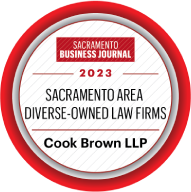Key Takeaways from a Recent California Court Ruling on Age Discrimination
For decades, state and federal mandates have required employers provide equal opportunity to all their employees, a mandate which requires equal access to training opportunities, promotions, and job-related tools and resources. While the principle of equal opportunity is clear, the practical application has become increasingly challenging in light of rapid changes in technology. Without any intention to discriminate, employers sometimes inadvertently assume older workers are incapable of learning new technology. That presumption can impact future employment opportunities and job stability, thereby causing age-based workplace discrimination. In the recent California appellate decision, Hoglund v. Sierra Nevada Memorial-Miners Hospital, the court shed light on this scenario, illuminating what constitutes age discrimination in a workplace under transition. The case also provides concrete examples of age-based harassment and is a good reminder to supervisors that their words matter.
Case Background
Plaintiff Hoglund was hired at age 49 to work as a phlebotomist trainee by the Sierra Nevada Memorial-Miners Hospital. In 2011, at the age of 56, Hoglund became the sole laboratory supervisor, supervising all the phlebotomists at the hospital and reporting to the hospital’s director of clinical operations. At trial, Hoglund presented evidence of repeated age-related remarks from her supervisor, commenting about her hair and manner of dress as “old-fashioned” and was repeatedly asked if she was going to retire. On one occasion, after Hoglund got a haircut, the director asked in front of other staff, “Why did you do that to your hair? Are you trying to look like a young person?”
Hoglund’s job duties expanded following the hiring of 50 phlebotomists, and Hoglund was working 12-hour days. Hoglund received a “meets expectations” review, but she reported that she felt that her director was trying to “run her out” because she continued to comment that they “need to hire young people” as they “should catch on quick.” In fact, Hoglund’s director commented that she “wanted to hire babies” because “they’re easier to train” and criticized Hoglund for preparing schedules on paper, by doing it “the old-fashioned way.”
Soon after, the Hospital upgraded its computer program. Although Hoglund had been proficient at the old program, her director said they would not send management for training on the new program but would instead pick out young people because again “they’re easier to train.” As such, a 31-year-old named Prout was chosen to become the trainer on the computer program and was promoted as a second supervisor in 2015. Hoglund trained Prout in her supervisory duties. Hoglund was tasked with more outreach (outpatient) services, while Proust was tasked with more inpatient services, but “both did both jobs” as supervisors.
In 2017, the hospital sold its outreach stations, so it was forced to lay off approximately 17 employees. Therefore, only one lab supervisor was needed. The decision was made to lay off Hoglund because Prout had “basic computer acumen” and adapted to the new computer system, whereas Hoglund struggled with her computer skills. Notably, most of the fired employees were also part of the outreach service program that Hoglund managed.
Following her termination, Hoglund filed a complaint alleging age discrimination, harassment, and wrongful discharge under the Fair Employment and Housing Act (FEHA). In a bench trial, the court found in favor of Hoglund and found the director jointly and severally liable with the Hospital for the harassment claim and awarded Hoglund $1.4 million in damages and $958,297 in attorneys’ fees.
On appeal, the court ruled that the director’s statements and actions toward Hoglund, including that she was “too old to be running around” and it was “time for new blood,” was substantial evidence of discriminatory animus toward Hoglund based on age. Next, the court found that the record supported the trial court’s finding that Hoglund was terminated due to the director’s discrimination and the hospital’s asserted legitimate basis for the layoff was pretextual. The court found that there was sufficient evidence for the trial court to conclude that there was a causal link between the defendant’s discrimination and Hoglund’s termination and upheld the trial court’s award.
Age Discrimination Cases
There are lessons for employers to learn from the Hoglund v. Sierra Nevada Memorial-Miners Hospital decision. Employers should be on the lookout for the following types of situations that are often alleged in age discrimination cases.
Isolation and Exclusion
The employee claimed she was excluded from important meetings and decision-making processes, impacting her ability to perform her job and contribute effectively. This isolation can be seen as a form of age-related harassment. If an employee alleges or an employer witnesses this happening, it should be investigated.
Job Reassignment and Demotion
Workplaces evolve and no employee is entitled to stay stagnant in their position. However, employers should be careful about sudden job reassignment that can appear to be a demotion to older workers. If employees are unable to keep up with their current job duties, ensure the employee is informed of the performance deficiencies, and if possible, training is offered.
Promotion Denial
Hoglund claimed she was overlooked for other opportunities in favor of younger colleagues, despite her qualifications and experience. This practice can be an indicator of age bias if an employer is providing promotions to younger, less experienced employees without the opportunity for the similarly situated employee to compete for the same promotion.
Takeaways for Employers
How can businesses avoid claims of discrimination and harassment in the workplace? Some best practices include:
Awareness and Training
Employers must foster an inclusive environment by providing regular training on anti-discrimination laws. and. California law (Government Code section 12950.1) already requires that all employers of 5 or more employees provide training to their employees regarding sexual harassment and abusive conduct. While this training already touches on all forms of harassment and discrimination, it is good business practice to weave in other awareness campaigns regarding sensitivity to what some employees may see as harmless comments such as referring to your “old timers” or asking employees “how much longer until you retire?” Sometimes innocent comments can build up over time and are pervasive enough to deem a work environment as hostile to individuals based on their age.
Policy Enforcement
Implement clear policies against age discrimination and ensure they are strictly enforced.
Monitoring and Reporting
Establish systems for employees to report discriminatory behavior and ensure complaints are thoroughly investigated. All policies are only as good as the people who enforce them. Here, the court noted that the Hospital never denied a formal complaint by Hoglund but continued to listen to her complaints “albeit ineffectually.” If an employer does not have adequate staffing to follow up on reports of inappropriate behavior, then employees will not report.
Performance Management
Conduct performance reviews fairly and based on objective criteria to avoid any appearance of bias. Where possible, incorporate multi-tier reviews so not just one manager is reviewing the performance of an individual. Allow employee feedback and then follow up on that feedback.
Avoid Stereotypes
There is no guarantee that your thirty-something employee is a computer genius and your 65-year-old employee is technologically inept. Do not assume that once someone turns a specific age, they must be planning to retire or even looking forward to retirement. Employees are individuals, so treat them as such.
Understanding and addressing age discrimination not only helps ensure legal compliance, but also promotes a more diverse and productive workplace for all.
For further details on this case, you can access the full court opinion here.

